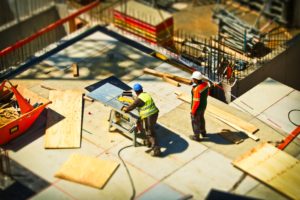
The National Association of Home Builders (NAHB), with information from the U.S. Census Bureau, reports that private residential construction spending [1] came in at $507.2 billion in June—a slight month-over-month decline.
The drop, however, is more dramatic when compared to 2018, as spending fell 8.1% from June 2018.
Declines, according to the NAHB, can be attributed to the slowdown of single-family construction and improvement spending. Spending on single-family construction fell 0.7% in June to an adjusted rate of $263.6 billion, which followed a 1% drop in May.
Spending on home improvement dipped 0.5% for the month, which is a 0.7% increase from May.
Also seeing a decline in June was the Producer Price Index (PPI), which showed prices for materials used in residential construction fell 1.1% in June, breaking a four-consecutive months of increases.
The decrease in the PPI, released by the NAHB, [2]is only the fifth time in the past two years where home prices fell.
Prices for building materials have decreased 1.6% year-over-year, and June 2019’s decline is stark contrast from June 2017 to June 2018 when prices grew 8.8%.
Softwood lumber prices decreased by 1.7% in June, which is the third-consecutive month of declines. Prices for softwood lumber remain at their lowest levels since February 2017.
Also seeing declines in June were prices for lumber and plywood, which fell 2.3%. Prices paid for softwood lumber and lumber, and plywood have decreased 23.1% and 17.6%, respectively, year-over-year.
A report by the NAHB in June stated that tariffs on $10 billion worth of building materials [3], along with regulatory costs, the shortage of construction workers, and concerns over housing finance have impact housing affordability.
According to the report, regulations account for 25% of the price of a single-family home, and 30% of the cost of a multi-family development.
“Removing regulatory barriers that contribute to the increased costs of housing will pave the way to homeownership,” said NAHB Chairman Greg Ugalde, a builder and developer from Torrington, Connecticut. “Home builders and the residential construction community are committed to working with Congress to ensure homeownership is within reach of hard working families.”